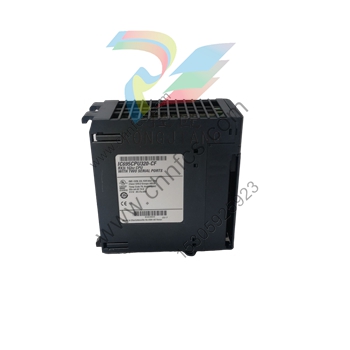
General Electric DS200TBQCG1AAA Analog Input Milliamp I/O Termination Module
Part Number:DS200TBQCG1AAA Series:Mark V Manufacturer:General Electric Instruction Manual:GEH-6153 Product Type:RST Analog Termination Board Functional Acronym:TBQC Number of TBQC Connections:5 (JBR, JFR, TEST, JBS/T, and JFS/T) Technical Specifications:Detailed technical specifications available upon request The GE DS200TBQCG1AAA module boasts a robust design, utilizing standard voltage-limiting hardware components such as rectifiers, capacitors, and diodes, ensuring reliability and durability under industrial conditions. This module is specifically tailored for the Mark V Series of turbine control systems, providing seamless compatibility and enhanced performance. With its intricate circuitry, the DS200TBQCG1AAA offers precise analog input/output termination, crucial for accurate data acquisition and system response. Designed for ease of assembly and maintenance, the DS200TBQCG1AAA features a straightforward PCB surface coating, facilitating quick setup and repair. Backed by GE commitment to innovation and quality, this module ensures consistent performance, making it an indispensable component for advanced industrial control applications.
The DS200TBQCG1AAA is an Analog Input Milliamp I/O Termination Module designed for the Mark V DS200 Series of turbine control systems. It provides precise and reliable analog signal processing capabilities, essential for industrial automation and control applications.
Technical specifications
Input and output signal range
The module mainly handles analogue signals in the milliampere range. The input signal range covers common industry standards such as 4 - 20mA, which is the standard current signal range used by many sensors to transmit information about physical quantities, and meets the signal acquisition needs of most industrial sites. At the same time, for special sensors, such as LVDT / R position sensors, the converted milliamp output can also be accurately processed by the module. The output signals are also in the milliamp range and usually correspond to the input signals to the connected TC QA boards and their corresponding cores. The output types are typically 20 - 200mA outputs to meet the requirements of the subsequent control units for signal driving capability.
Hardware Interface Configuration
DS200TBQCG1AAA module is very rich in hardware interface design, with two terminal blocks, each block has 83 terminals carefully designed for connecting signal wires, providing sufficient interface resources for accessing many signal sources. At the same time, the module also integrates 15 jumpers, these jumpers become the key elements of flexible signal configuration and adjustment of the module's functions, users can according to the actual application scenarios and system requirements, through the adjustment of jumper position to change the module's behaviour, to meet the precise requirements of the drive operation. In terms of connectors, the module is equipped with three 40-pin connectors and three 34-pin connectors, including the JBR TC QA board input signal connector, the JFR TC QA board LVDT/R position signal connector, the JBS/T connector, the JFS/T connector, and the test connector. It is worth noting that the JBS / T, JFS / T and Test connectors are often under-utilised in routine use, with their function reserved for factory testing and specific situations, while the JBR and JFR connectors play a central role in the signal transmission and system integration of the modules.
Electrical Performance Parameters
Application Scenarios Energy Generation
Gas Turbine Power Generation
In gas turbine power stations, GE DS200TBQCG1AAA is widely used in Mark V turbine control system. It is responsible for accurately collecting various analogue signals during the operation of the gas turbine, such as the milliamperes signals representing the temperatures of various parts of the gas turbine output from the temperature sensor, and the 4-20mA signals of the pressure inside the combustion chamber fed back from the pressure sensor. These signals are crucial for the control system to monitor the operating status of the gas turbine and optimise the combustion process in real time. By accurately collecting and transmitting these signals, the control system is able to accurately adjust the fuel injection volume, air intake volume and other parameters according to the actual operation of the gas turbine, so as to realise efficient combustion and stable operation of the gas turbine, and to improve the efficiency of power generation and the reliability of power supply. At the same time, the module can also transmit the collected signals to the monitoring system, providing real-time equipment operation data to the operation and maintenance personnel, which facilitates timely detection of potential problems and maintenance.
Performance Characteristics
High Precision Signal Processing
This module demonstrates high accuracy in analogue signal processing. Advanced analogue-to-digital converter (ADC) circuits and sophisticated signal conditioning circuits are integrated within the module to enable accurate processing of incoming milliamp analogue signals. In the Mark V turbine control system, different types of sensors output signals with different ranges and characteristics, for example, pressure sensors may output current signals in the range of 4 - 20mA, while position sensors (such as LVDT / R) output milliamperes converted from analogue voltage signals in a specific range. The DS200TBQCG1AAA is able to process signals with very small errors, taking into account the characteristics of the different signals. The DS200TBQCG1AAA is able to control the signal processing error within a very small range according to the characteristics of these different signals, e.g. for 4 - 20mA standard current signals, the measurement accuracy can reach ±0.1% FS (full scale), which ensures that each signal is accurately captured and transmitted, and provides reliable data to support the control system to optimise the performance of the whole turbine control system.



